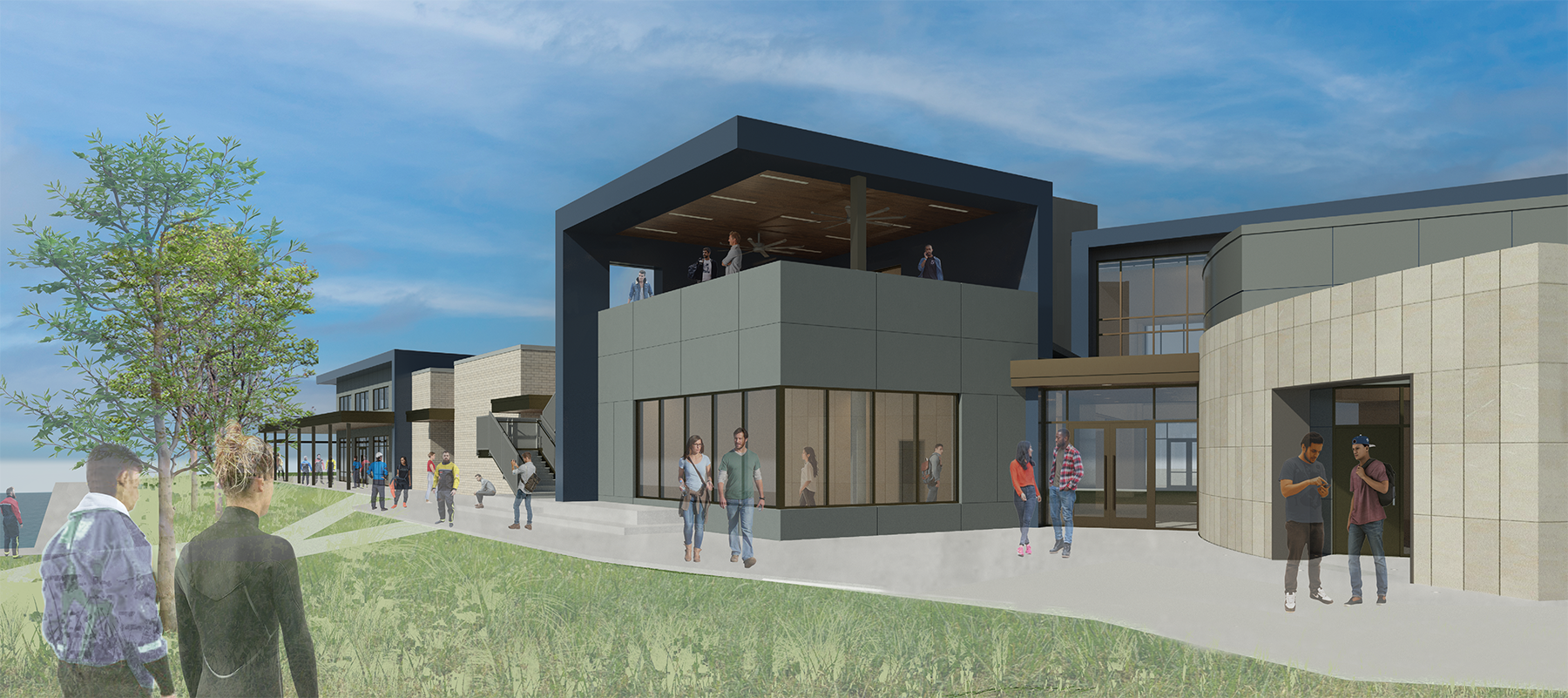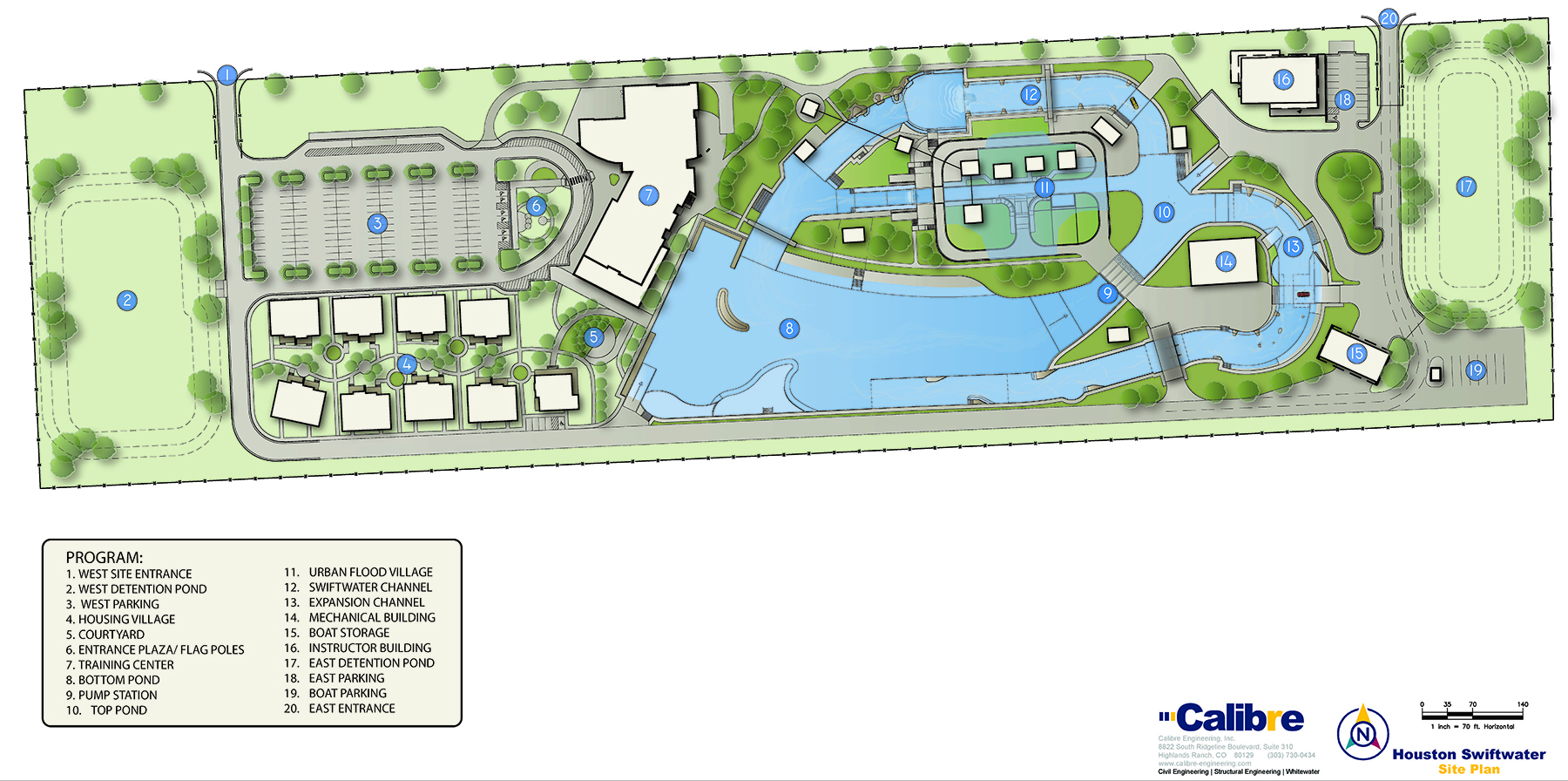 Liquid Design & Architecture
Liquid Design & Architecture Houston is going to be home to an advanced training facility aimed at preparing first responders to conduct rescue operations in fast-moving floodwaters. The Swiftwater Training for Operation and Rescue Missions facility will be constructed on 27 acres of undeveloped land that belongs to the Harris Fort Bend Emergency Services District #100, which services an area within Harris and Fort Bend counties on the west side of Houston.
Emergency services districts are political subdivisions in the state of Texas that provide various emergency response activities to particular regions.
Further reading:
- What did engineers do when a massive landslide blocked a road in Denali National Park?
- How to keep civil engineers safe at work, in the field
- Engineers share critical safety tips for helping at natural disaster sites
Phased construction on the training facility is expected to begin next year. No opening date has been announced. The project is being designed for the emergency services district by a team led by Calibre Engineering Inc., of Highlands Ranch, Colorado. This facility is envisioned as potentially the largest and most advanced training facility of its kind in the world. In addition to Calibre, architecture services are provided by Liquid Design, landscape architecture by Norris Design, and aquatic design by Cloward H2O.
The facility will feature a 6 million-gallon lower pond on the southern side of the facility and pumps that will move 750 cubic feet of water per second into the top pond on the northern side of the venue. From there, the water can be sent through one of two concrete-lined channels or through an area called the urban flood rescue simulator – a mock floodable version of a typical Main Street in America, with concrete shells of one- or two-story structures that can be flooded to provide rescue training scenarios (including boat operations) in a simulated and controlled environment, says Riley Adams, a whitewater project manager at Calibre.
One of the channels will measure roughly 700 feet long, designated the Swiftwater Channel. The Swiftwater Channel is an artificial river that will feature class 2 and 3 rapids that are designed to be an ideal training environment for first responders wishing to attain Swiftwater Technician level 1 and 2 certifications. The channels will create rapids using large, movable plastic obstacles that can be adjusted to simulate various whitewater and rescue conditions. This channel and the connection system used for the plastic obstacles allow for the placement of specialized training scenarios involving vehicles, for example.
Additionally, this channel features a simulated gorge, an in-stream building, and a high wall extraction platform to create more advanced training scenarios.
The second, or expansion, channel will be roughly 800 feet long. Colloquially referred to as the Texas Channel, it is tailored to the local environment and will create conditions that might be found in the rural riverbeds and concrete bayous of Texas. These conditions include areas that match the typical slope and finish of canals around the Houston region, areas with wider and more difficult-to-access streambeds, and natural wading obstacles that mimic the wooded and rocky riverbeds found in parts of Texas.
The Texas Channel will also feature a low bridge crossing with only 3-4 feet of clearance above the water surface that allows “trainees to practice moving under the limited headroom” in something like a flooded culvert, says Ben Murphy, P.E., a civil project manager at Calibre.
Urban efforts
In the urban flood village, the mock buildings will essentially be hollow concrete shells with slab foundations to keep them stable in the rushing water. One structure will include a flooded basement and an elevator shaft to practice rescuing people in flooded and confined spaces, says Riley. There will be a low structure with a pitched roof that features a sacrificial area with plywood and wooden rafters. This will enable the trainees to practice cutting through the roof to rescue people trapped in attics, Riley says.
Training sessions will be conducted either by the emergency services district staff or trainers brought in by the trainee groups. The flood “victims” being rescued will generally be either fellow trainees or practice dummies, depending on the training scenario, notes Murphy.
A high rope tower will allow trainees to practice Tyrolean traverses, which involve crossing a void on ropes between two fixed points, and use rope systems to extract people from boats or vehicles, says Adams. There are also two mock maintenance hole covers in the urban street that will be used to simulate how water can drag things down into the sewers during a high-rain event or blow water high into the air, says Murphy.
Dangerous work
A gate at the western end of the urban village can either be closed to inundate the buildings or opened to create rapid-moving sheet flow through the city block. A simulated low-head dam at the western end will allow trainees to practice rescuing people from highly turbulent water created by a vertical drop of several feet, explains Murphy.
Because of the inherent danger from such turbulence, the Houston facility will feature walkways and platforms installed in close proximity to the low-head dam area. This will enable training staff to be close by to instruct trainees in the safest methods for undertaking the various rescue scenarios and, if needed, ready to rescue trainees who might get in trouble, says Murphy.
So-called panic buttons are also on light poles around the facility. “If something goes wrong, you hit the button, and all pumps are immediately turned off, and every light in the facility is turned on. Additionally, a flashing beacon will activate to indicate which button was pressed,” noted Murphy.
Although most of the urban village buildings are elevated slightly above the grade of the water channels, the recent floods from Hurricane Helene in North Carolina last year inspired Calibre’s team to place one building right at the level of the channels, in the Swiftwater Channel. That’s because many houses in North Carolina that had never flooded before did flood during Helene, Murphy explains. “The river moved and came up to those buildings,” he said. “So, we have a building down at grade allowing boats to work their way up and sit in the current while trying to get people in and out of buildings.”
 Liquid Design & Architecture
Liquid Design & Architecture
The facility is being designed so that water can be sent through multiple channels at the same time. Many of the features are modular and movable, so that the conditions can be changed to make sure “people don’t get too familiar” with any particular training scenario, Riley notes.
In addition to the flooded features, the facility will offer on-site housing for trainees who might stay a few days or even a week. In future phases, classroom training spaces, administrative offices, a cafeteria, recreational facilities, and additional housing will be added to complete the campuslike facility.
A treatment system will keep the faux floodwaters clean and safe for trainees. The site will also be carefully graded to move actual stormwater and sediment away from the ponds and channels and instead send it to swales and one of two detention ponds on the site. Stormwater will also be collected, treated, and reintroduced to the Swiftwater facility to offset any loss of water due to evaporation from the Texas heat.




